Diurnal Thermal Behavior of Photovoltaic Panel with Phase Change Materials under Different Weather Conditions
Abstract
:1. Introduction
2. Materials and Methods
2.1. Thermal Properties of PCMs
2.2. Thermal Model for PV Panel with PCMs
2.3. Validation of the Thermal Model for PV Panel with PCMs
2.4. Weather Conditions and Simulation Methods
2.4.1. Weather Conditions
2.4.2. Simulation Methods
3. Results and Discussion
3.1. Mean Opeating Temperatures of PV Cells
3.2. Total Heat Flux from the PV Panel to the Surroundings
3.3. Discussions about the Improvement of Power Generation Efficiency
4. Conclusions
Acknowledgments
Author Contributions
Conflicts of Interest
References
- Radziemska, E. The effect of temperature on the power drop in crystalline silicon solar cell. Energy 2003, 28, 1–12. [Google Scholar] [CrossRef]
- Skoplaki, E.; Palyvos, J.A. Operating temperature of photovoltaic modules: A survey of pertinent correlations. Renew. Energy 2009, 34, 23–29. [Google Scholar] [CrossRef]
- Brinkworth, B.J. Estimation of flow and heat transfer for the design of PV cooling ducts. Sol. Energy 2000, 69, 413–420. [Google Scholar] [CrossRef]
- Yun, G.Y.; McEvoy, M.; Steemers, K. Design and overall energy performance of a ventilated photovoltaic façade. Sol. Energy 2007, 81, 383–394. [Google Scholar] [CrossRef]
- Tonui, J.K.; Tripanagnostopoulos, Y. Improved PV/T solar collectors with heat extraction by forced or natural air circulation. Renew. Energy 2007, 32, 623–637. [Google Scholar] [CrossRef]
- Tonui, J.K.; Tripanagnostopoulos, Y. Air-cooled PV/T solar collectors with low cost performance improvements. Sol. Energy 2007, 81, 498–511. [Google Scholar] [CrossRef]
- Huang, M.J.; Eames, P.C.; Norton, B. Phase change materials for limiting temperature rise in building integrated photovoltaics. Sol. Energy 2006, 80, 1121–1130. [Google Scholar] [CrossRef]
- Huang, M.J.; Eames, P.C.; Norton, B. Comparison of a small-scale 3D PCM thermal control model with a validated 2D PCM thermal control model. Sol. Energy Mater. Sol. Cells 2006, 90, 1961–1972. [Google Scholar] [CrossRef]
- Huang, M.J.; Eames, P.C.; Norton, B. Thermal regulation of building-integrated photovoltaics using phase change materials. Int. J. Heat Mass Transf. 2004, 47, 2715–2733. [Google Scholar] [CrossRef]
- Hasan, A.; McCormack, S.J.; Huang, M.J.; Norton, B. Energy and Cost Saving of a Photovoltaic-Phase Change Materials (PV-PCM) System through Temperature Regulation and Performance Enhancement of Photovoltaics. Energies 2014, 7, 1318–1331. [Google Scholar] [CrossRef]
- Nižetić, S.; Papadopoulos, A.M.; Giama, E. Comprehensive analysis and general economic-environmental evaluation of cooling techniques for photovoltaic panels, Part I: Passive cooling techniques. Energy Convers. Manag. 2017, 149, 334–354. [Google Scholar] [CrossRef]
- Nižetić, S.; Arici, M.; Bilgin, F.; Grubišić-Čabo, F. Investigation of pork fat as potential novel phase change material for passive cooling applications in photovoltaics. J. Clean. Prod. 2018, 170, 1006–1016. [Google Scholar] [CrossRef]
- International Energy Agency (IEA) Photovoltaic Power Systems Programme (PVPS). Available online: http://www.iea-pvps.org/index.php?id=146 (accessed on 1 June 2017).
- Bücher, K. Site dependence of the energy collection of PV modules. Sol. Energy Mater. Sol. Cells 1997, 47, 85–94. [Google Scholar] [CrossRef]
- Nassar, Y.F.; Salem, A.A. The reliability of the photovoltaic utilization in southern cities of Libya. Desalination 2007, 209, 86–90. [Google Scholar] [CrossRef]
- Cellura, M.; Ciulla, G.; Brano, V.L.; Marvuglia, A.; Orioli, A. A Photovoltaic panel coupled with a phase changing material heat storage system in hot climates. In Proceedings of the 25th Conference on Passive and Low Energy Architecture, Dublin, Ireland, 22–24 October 2008. [Google Scholar]
- Chang, S.J.; Kang, Y.; Wi, S.; Jeong, S.G.; Kim, S. Hygrothermal performance improvement of the Korean wood frame walls using macro-packed phase change materials (MPPCM). Appl. Ther. Eng. 2017, 114, 457–465. [Google Scholar] [CrossRef]
- Indartono, Y.S.; Suwono, A.; Pratama, F.Y. Improving photovoltaics performance by using yellow petroleum jelly as phase change material. Int. J. Low-Carbon Technol. 2016, 11, 333–337. [Google Scholar] [CrossRef]
- Physibel. Available online: http://www.physibel.be/bistra.htm (accessed on 1 June 2017).
- Song, J.H.; Jin, H.S.; Jeong, S.G.; Kim, S.; Song, S.Y.; Lim, J.H. Empirical validation of heat transfer performance simulation of Graphite/PCM concrete materials for thermally activated building system. Int. J. Polym. Sci. 2017, 2017, 6792621. [Google Scholar] [CrossRef]
- ISO. ISO 6946 Building Components and Building Elements—Thermal Resistance and Thermal Transmittance—Calculation Method; ISO: Geneva, Switzerland, 2007. [Google Scholar]
- Wang, Y.; Wang, S.; Wang, J.; Yang, R. Preparation, stability and mechanical property of shape-stabilized phase change materials. Energy Build. 2014, 77, 11–16. [Google Scholar] [CrossRef]
- Jurkowska, M.; Szczygieł, I. Review on properties of microencapsulated phase change materials slurries (mPCMS). Appl. Therm. Eng. 2016, 98, 365–373. [Google Scholar] [CrossRef]
- Wang, Y.; Xia, T.D.; Zheng, H.; Feng, H.X. Stearic acid/silica fume composite as form-stable phase change material for thermal energy storage. Energy Build. 2011, 43, 2365–2370. [Google Scholar] [CrossRef]
- Zhang, P.; Hu, Y.; Song, L.; Ni, J.; Xing, W.; Wang, J. Effect of expanded graphite on properties of high-density polyethylene/paraffin composite with intumescent flame retardant as a shape-stabilized phase change material. Sol. Energy Mater. Sol. C 2010, 94, 360–365. [Google Scholar] [CrossRef]
- Biwole, P.; Eclache, P.; Kuznik, F. Improving the performance of solar panels by the use of phase-change materials. In Proceedings of the World Renewable Energy Congress, Linköping, Sweden, 8–13 May 2011; pp. 2953–2960. [Google Scholar]
- Skoplaki, E.; Palyvos, J.A. On the temperature dependence of photovoltaic module electrical performance: A review of efficiency/power correlations. Sol. Energy 2009, 83, 614–624. [Google Scholar] [CrossRef]
- Rosell, J.I.; Ibáñez, M. Modelling power output in photovoltaic modules for outdoor operating conditions. Energy Convers. Manag. 2006, 47, 2424–2430. [Google Scholar] [CrossRef]
- Emery, K.; Burdick, J.; Caiyem, Y.; Dunlavy, D.; Field, H.; Kroposki, B.; Moriatry, T. Temperature dependence of photovoltaic cells, modules and systems. In Proceedings of the 25th IEEE PV Specialists Conference, Washington, DC, USA, 13–17 May 1996; pp. 1275–1278. [Google Scholar]

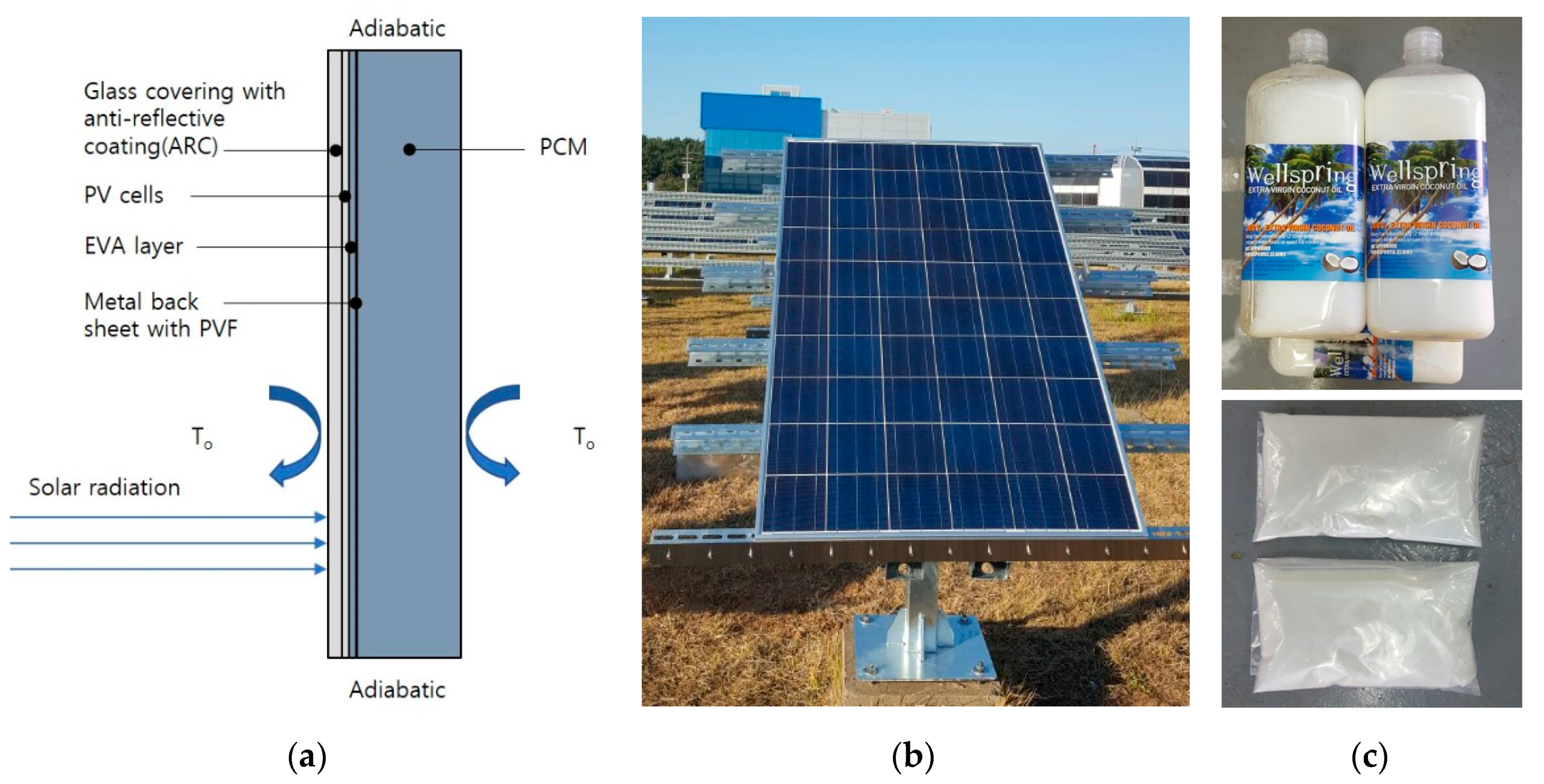


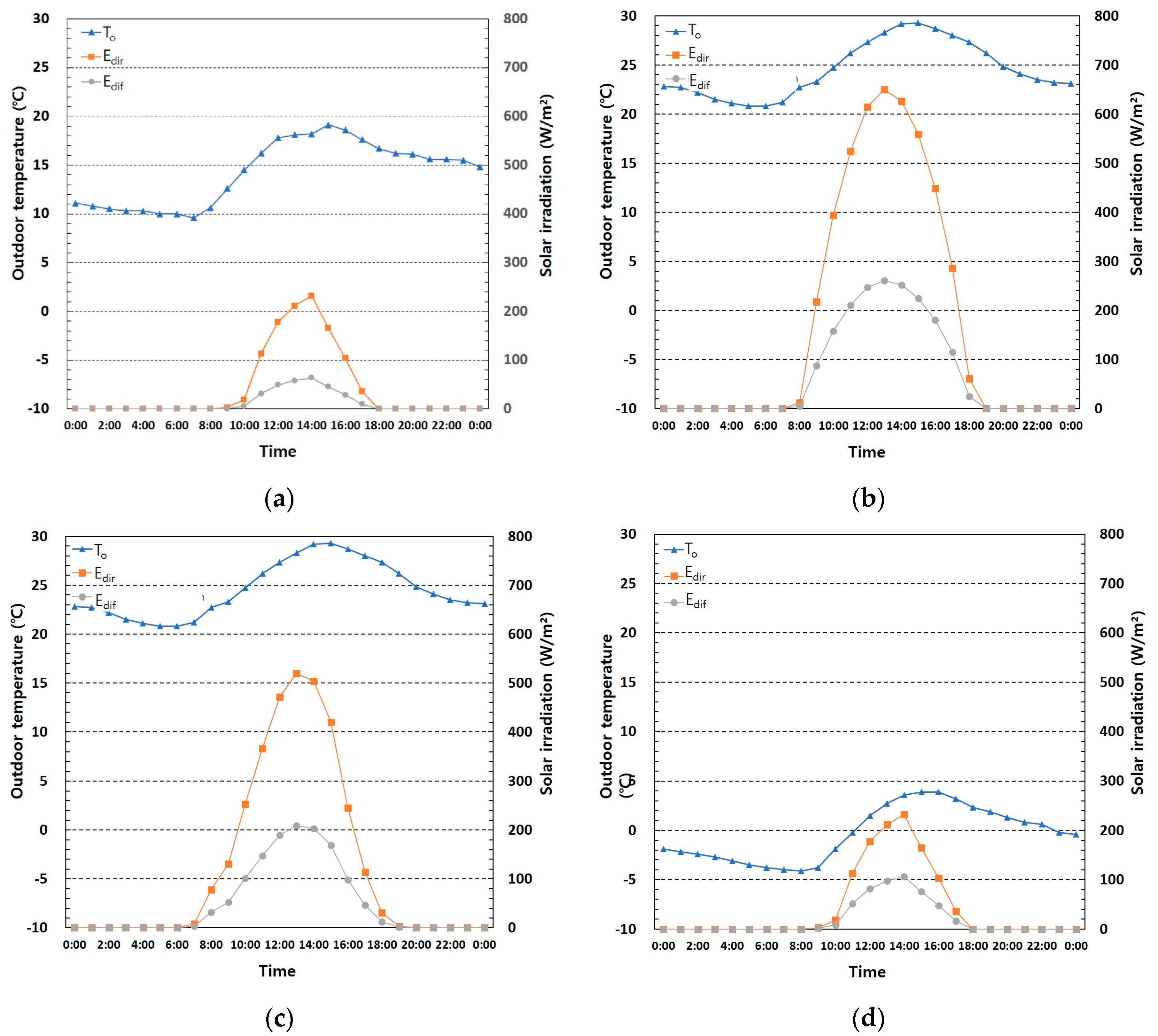
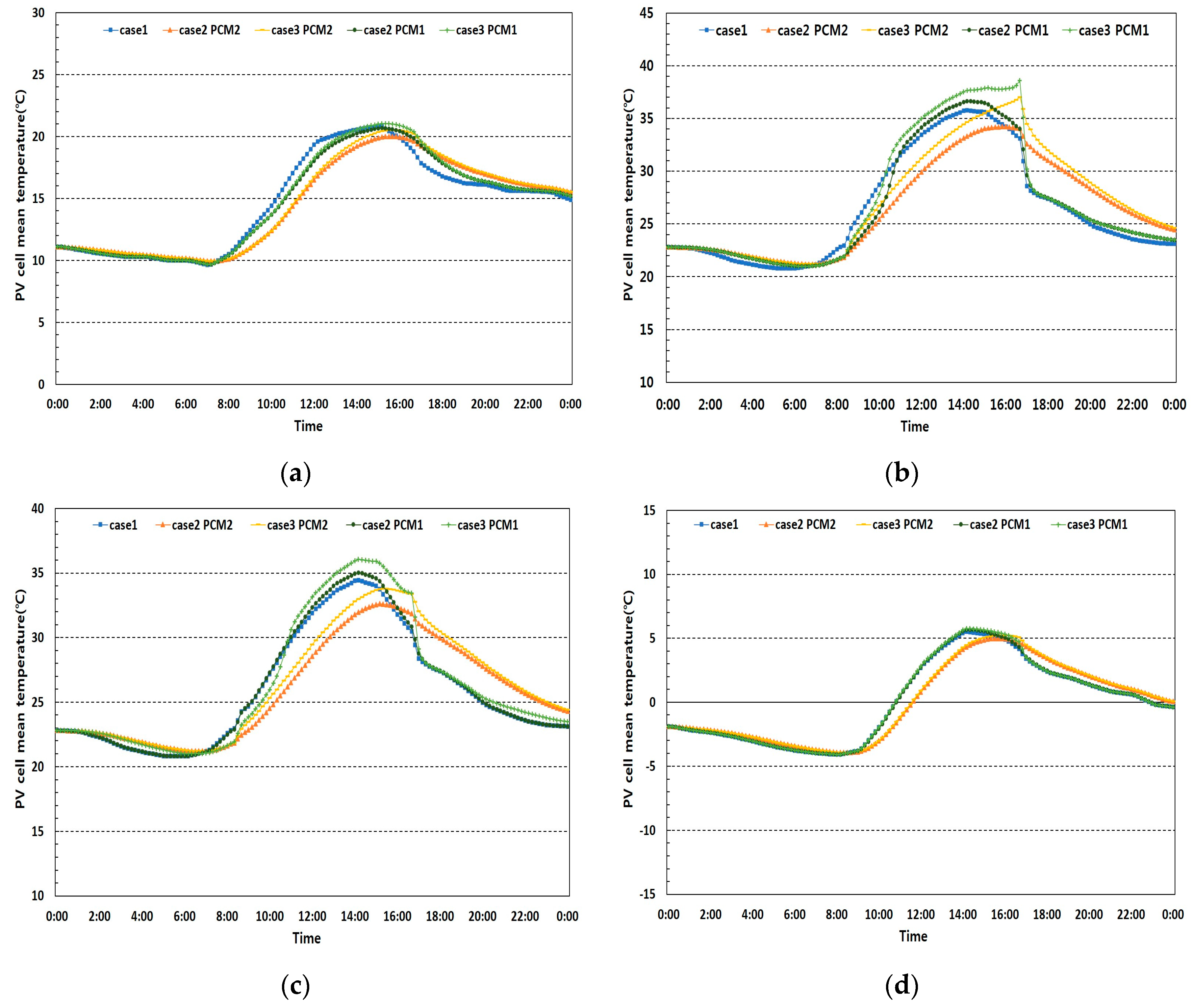
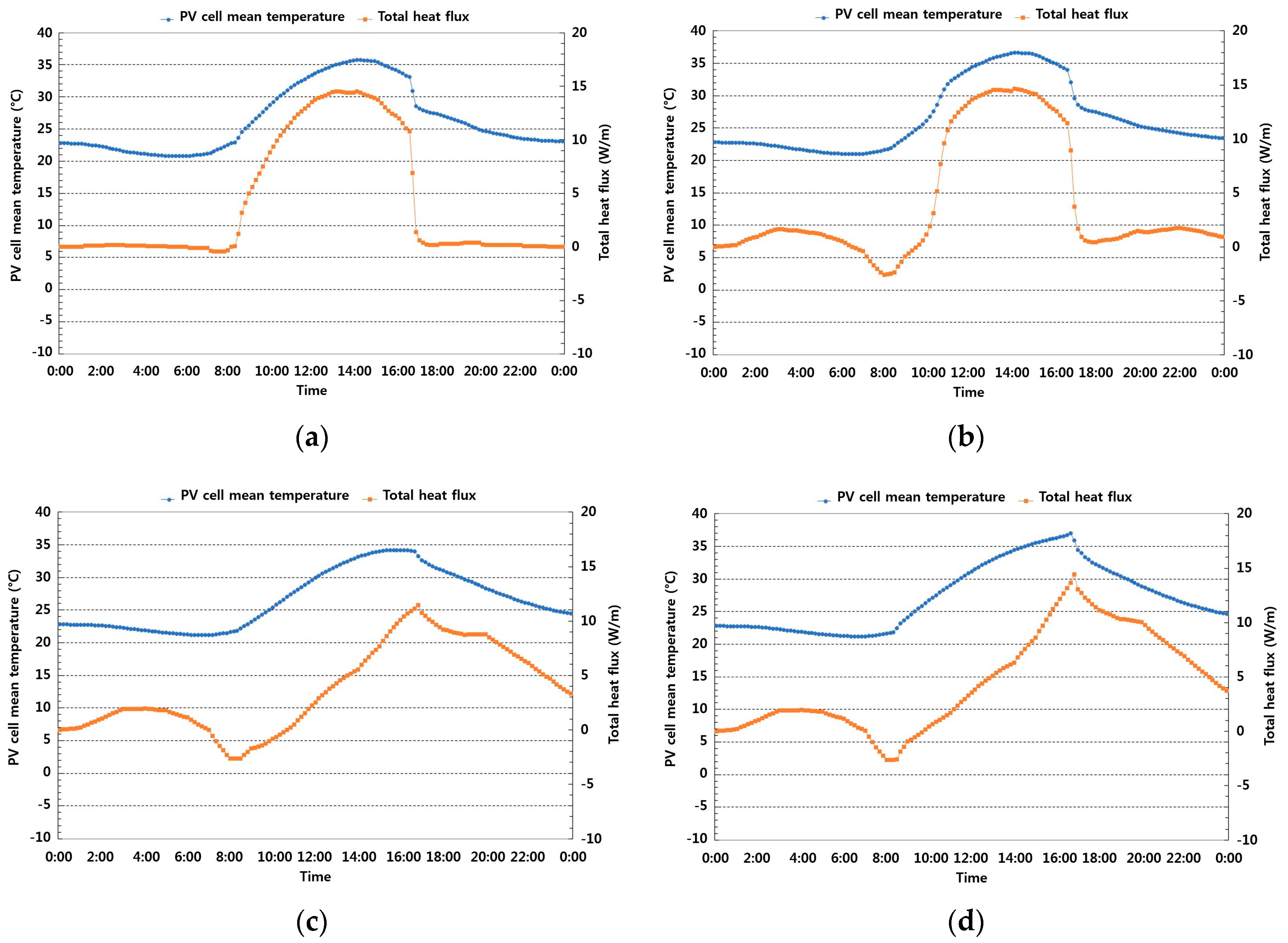
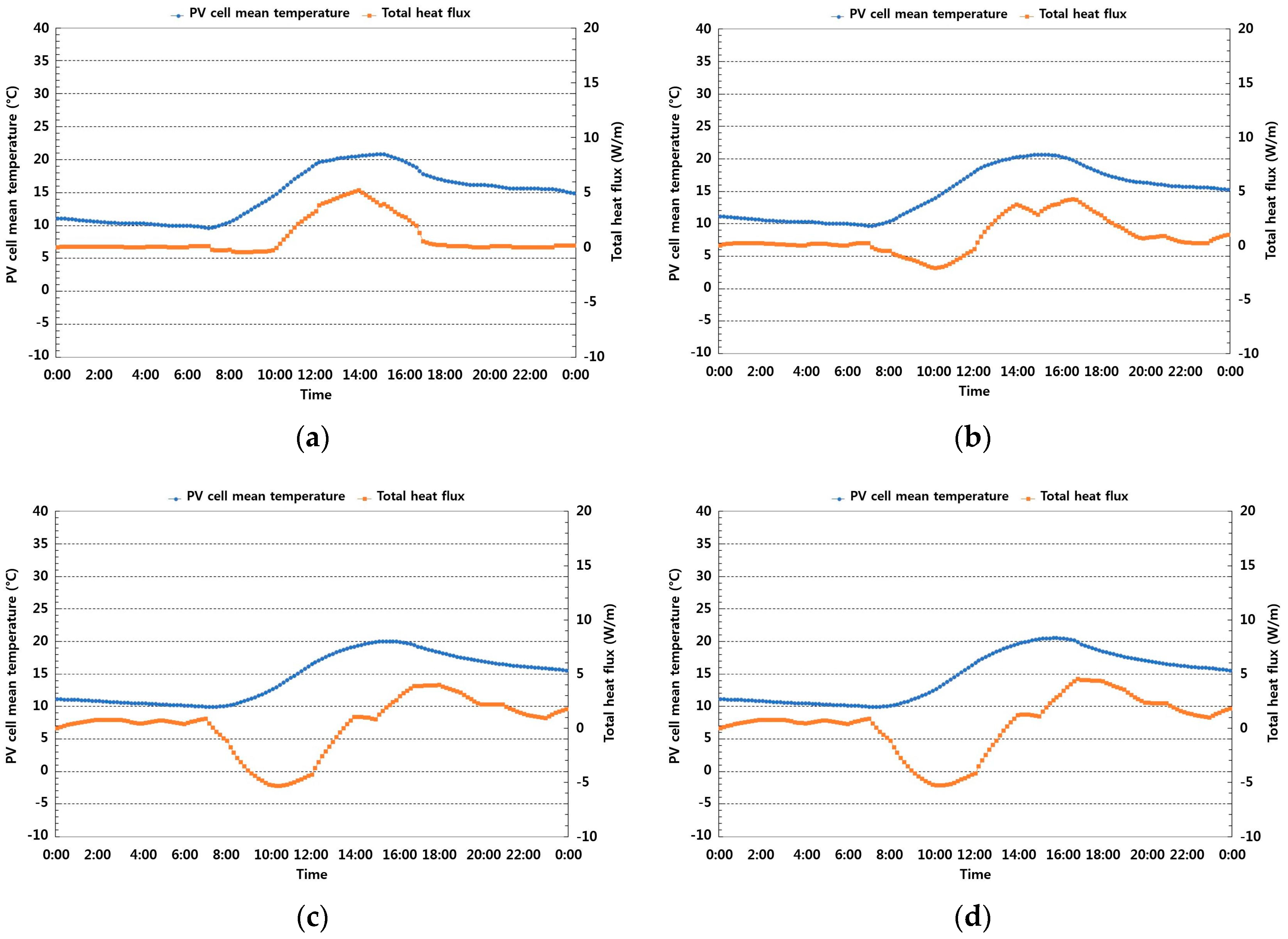
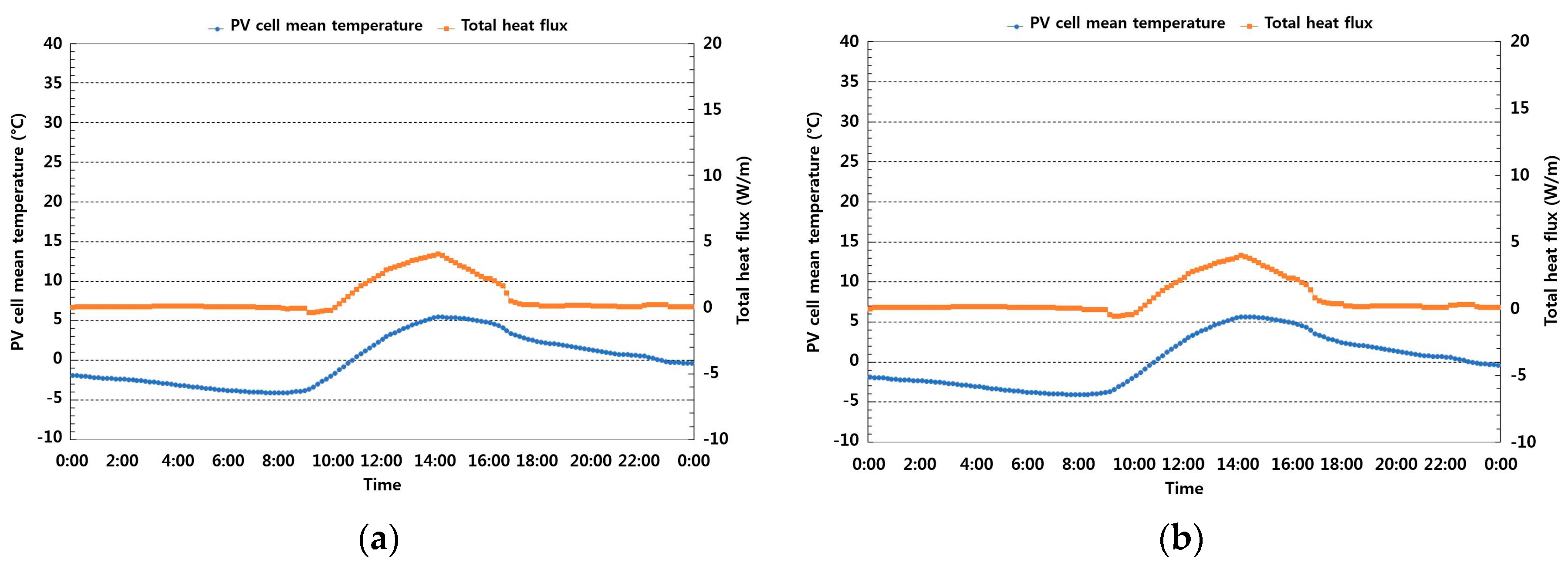
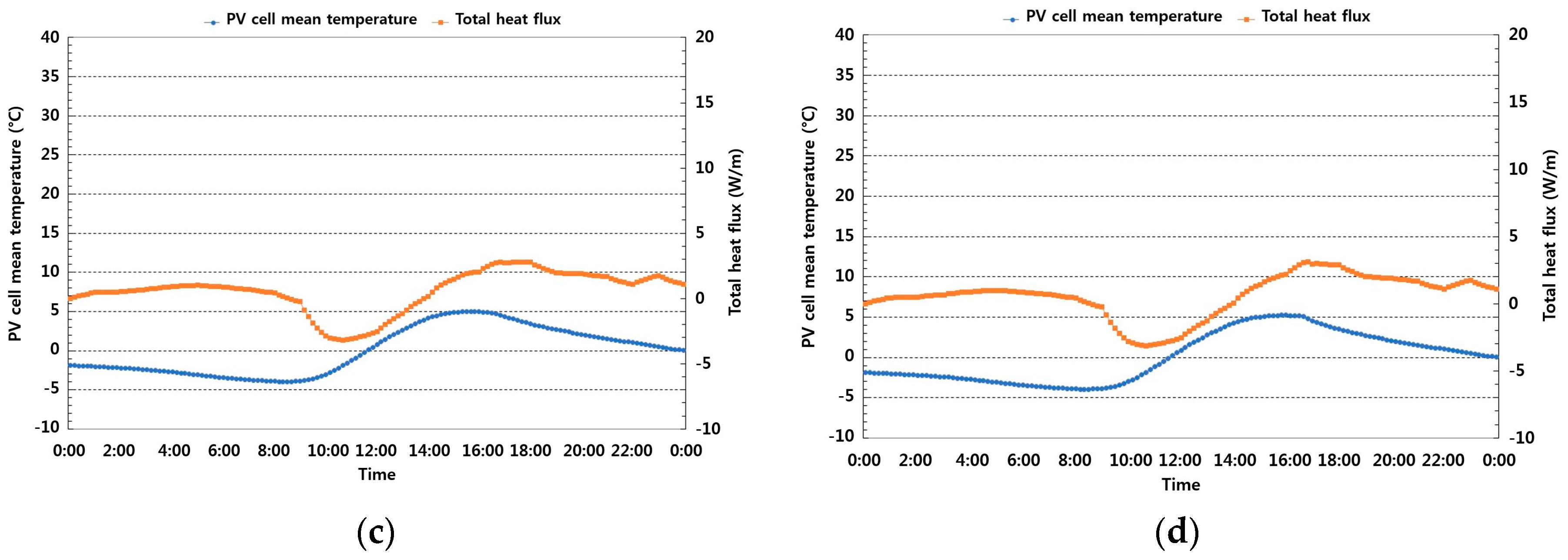
| Layer Name | Thickness (m) | Conductivity (W/m·K) | Density (kg/m3) | Specific Heat Capacity (J/kg·K) |
|---|---|---|---|---|
| Glass covering | 0.003 | 1.8 | 3000 | 500 |
| PV cells | 0.00022 | 148 | 2330 | 677 |
| EVA | 0.00050 | 0.35 | 960 | 2090 |
| Metal back sheet | 0.00001 | 237 | 2700 | 900 |
| PCM1 | 0.01 | 0.321 | 872 | Refer to Figure 1 |
| PCM2 | 0.01 | 0.18 | 850 | Refer to Figure 1 |
| Simulation Cases | MMPCM Methods | PCM Types |
|---|---|---|
| Case1 | - | - |
| Case2 PCM1 | Honeycomb grid steel container | Fatty acid ester (Coconut oil) |
| Case2 PCM2 | Honeycomb grid steel container | Petroleum jelly (Vaseline) |
| Case3 PCM1 | Nylon bag container | Fatty acid ester (Coconut oil) |
| Case3 PCM2 | Nylon bag container | Petroleum jelly (Vaseline) |
© 2017 by the authors. Licensee MDPI, Basel, Switzerland. This article is an open access article distributed under the terms and conditions of the Creative Commons Attribution (CC BY) license (http://creativecommons.org/licenses/by/4.0/).
Share and Cite
Lim, J.-H.; Lee, Y.-S.; Seong, Y.-B. Diurnal Thermal Behavior of Photovoltaic Panel with Phase Change Materials under Different Weather Conditions. Energies 2017, 10, 1983. https://doi.org/10.3390/en10121983
Lim J-H, Lee Y-S, Seong Y-B. Diurnal Thermal Behavior of Photovoltaic Panel with Phase Change Materials under Different Weather Conditions. Energies. 2017; 10(12):1983. https://doi.org/10.3390/en10121983
Chicago/Turabian StyleLim, Jae-Han, Yoon-Sun Lee, and Yoon-Bok Seong. 2017. "Diurnal Thermal Behavior of Photovoltaic Panel with Phase Change Materials under Different Weather Conditions" Energies 10, no. 12: 1983. https://doi.org/10.3390/en10121983





